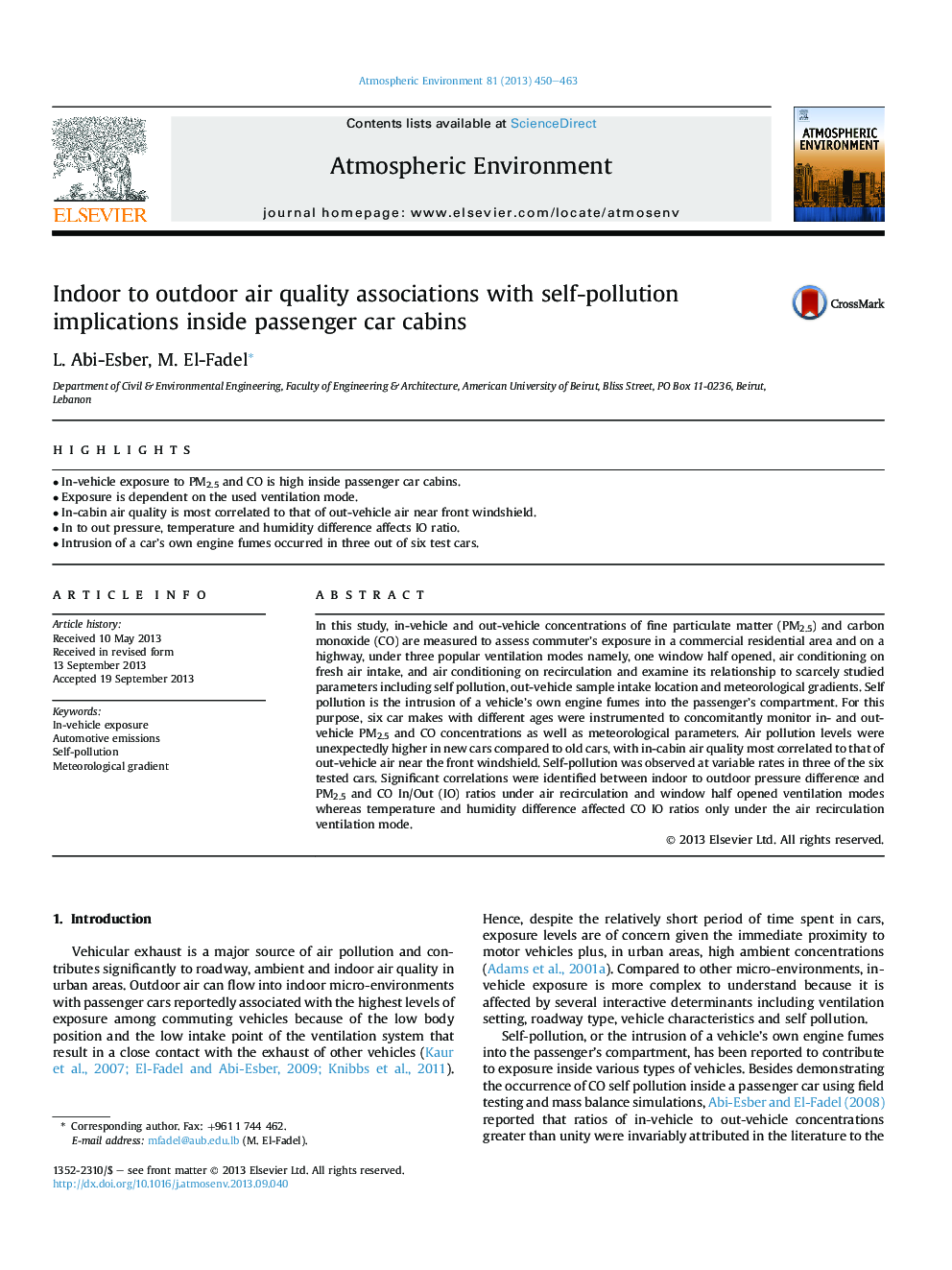| Article ID | Journal | Published Year | Pages | File Type |
|---|---|---|---|---|
| 6340496 | Atmospheric Environment | 2013 | 14 Pages |
â¢In-vehicle exposure to PM2.5 and CO is high inside passenger car cabins.â¢Exposure is dependent on the used ventilation mode.â¢In-cabin air quality is most correlated to that of out-vehicle air near front windshield.â¢In to out pressure, temperature and humidity difference affects IO ratio.â¢Intrusion of a car's own engine fumes occurred in three out of six test cars.
In this study, in-vehicle and out-vehicle concentrations of fine particulate matter (PM2.5) and carbon monoxide (CO) are measured to assess commuter's exposure in a commercial residential area and on a highway, under three popular ventilation modes namely, one window half opened, air conditioning on fresh air intake, and air conditioning on recirculation and examine its relationship to scarcely studied parameters including self pollution, out-vehicle sample intake location and meteorological gradients. Self pollution is the intrusion of a vehicle's own engine fumes into the passenger's compartment. For this purpose, six car makes with different ages were instrumented to concomitantly monitor in- and out-vehicle PM2.5 and CO concentrations as well as meteorological parameters. Air pollution levels were unexpectedly higher in new cars compared to old cars, with in-cabin air quality most correlated to that of out-vehicle air near the front windshield. Self-pollution was observed at variable rates in three of the six tested cars. Significant correlations were identified between indoor to outdoor pressure difference and PM2.5 and CO In/Out (IO) ratios under air recirculation and window half opened ventilation modes whereas temperature and humidity difference affected CO IO ratios only under the air recirculation ventilation mode.
